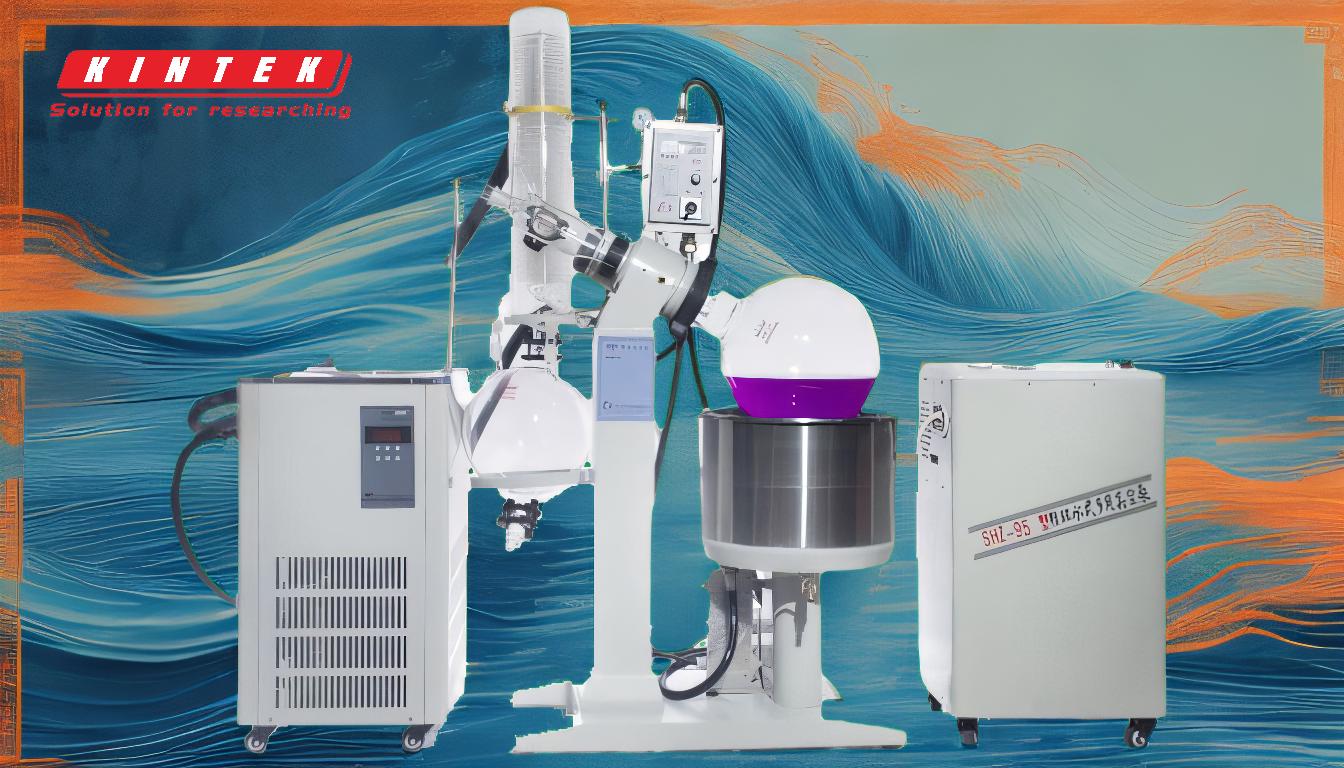Simple distillation is a fundamental separation technique used to isolate components of a liquid mixture based on their differing boiling points. The process involves heating the mixture to its boiling point, allowing the more volatile component (lower boiling point) to vaporize first. The vapor is then condensed back into a liquid and collected separately. This method is most effective when the boiling points of the components differ by at least 70 degrees Celsius, ensuring a clear separation. Simple distillation is widely used in applications such as purifying water or separating solvents, providing a moderate improvement in purity.
Key Points Explained:

-
Principle of Simple Distillation:
- Simple distillation relies on the difference in boiling points of the components in a mixture.
- When heated, the component with the lower boiling point vaporizes first, while the higher boiling point component remains in the liquid phase.
- The vapor is then condensed and collected, resulting in the separation of the two components.
-
Construction of a Simple Distillation Apparatus:
- Distillation Flask: Contains the liquid mixture to be heated.
- Heat Source: Provides the energy required to boil the mixture.
- Thermometer: Monitors the temperature of the vapor to ensure it matches the boiling point of the desired component.
- Condenser: Cools the vapor back into a liquid.
- Receiving Flask: Collects the condensed liquid (distillate).
- The components are connected in a closed system to prevent contamination and ensure efficient separation.
-
Working Process of Simple Distillation:
- The liquid mixture is heated in the distillation flask until it reaches the boiling point of the more volatile component.
- The vapor rises and passes through the condenser, where it is cooled and converted back into a liquid.
- The distillate is collected in the receiving flask, while the remaining liquid in the distillation flask becomes enriched with the higher boiling point component.
- The process continues until the desired separation is achieved.
-
Key Considerations for Effective Simple Distillation:
- Boiling Point Difference: The components must have a significant difference in boiling points (at least 70°C) for effective separation.
- Temperature Control: Precise control of the heating process ensures that only the desired component vaporizes.
- Purity of Distillate: The purity of the collected distillate depends on the efficiency of the condensation process and the initial composition of the mixture.
-
Applications of Simple Distillation:
- Water Purification: Removing impurities and salts from water.
- Solvent Recovery: Separating and reusing solvents in chemical processes.
- Essential Oil Extraction: Isolating volatile oils from plant materials.
-
Advantages and Limitations:
-
Advantages:
- Simple and cost-effective for separating liquids with large differences in boiling points.
- Suitable for small-scale laboratory applications.
-
Limitations:
- Ineffective for separating components with similar boiling points.
- Requires careful temperature control to avoid contamination.
-
Advantages:
By understanding the construction, working principles, and key considerations of simple distillation, one can effectively apply this technique in various scientific and industrial processes.
Summary Table:
| Aspect | Details |
|---|---|
| Principle | Separates components based on boiling point differences. |
| Apparatus | Distillation flask, heat source, thermometer, condenser, receiving flask. |
| Working Process | Heat mixture, condense vapor, collect distillate. |
| Key Considerations | Boiling point difference ≥ 70°C, precise temperature control. |
| Applications | Water purification, solvent recovery, essential oil extraction. |
| Advantages | Cost-effective, suitable for small-scale labs. |
| Limitations | Ineffective for similar boiling points, requires careful temperature control. |
Need help with simple distillation setups? Contact our experts today for tailored solutions!










